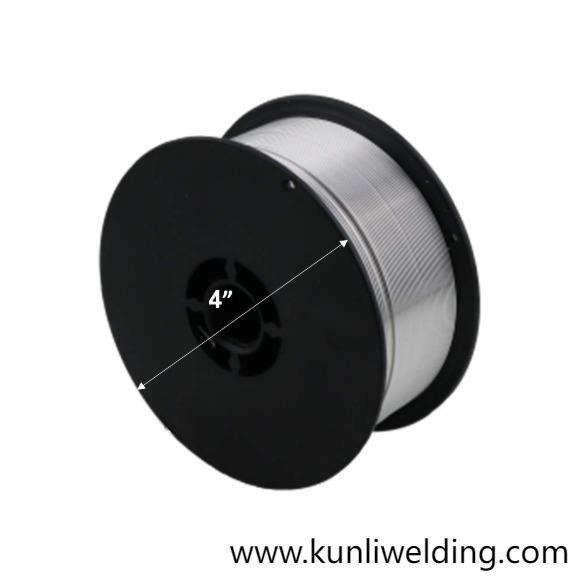When Will A Cleaner Weld Pay Back Its Price In Service

In modern fabrication conversations about balancing purchase price with long term value, Aluminum Welding Wire ER4943 often appears as a candidate worth evaluating. Its profile invites questions about how upfront costs compare with service life benefits when used in applications that demand corrosion resistance and consistent joint performance. Fabricators facing tighter budgets and pressure to deliver durable assemblies want clear thinking about where investment in the right filler pays off over the life of a project.
Market attention on lighter structures and sustainability has nudged designers and buyers to reassess material choices and joining strategies. As lighter metal use expands across sectors that include transportation and built environments, the welding filler becomes a meaningful contributor to overall asset performance. A filler that helps preserve structural geometry while resisting surface degradation reduces the need for rework and conserves resources during service life. These advantages are especially relevant when supply chains are strained and downtime carries a hidden cost.
Weighing cost against performance starts with understanding the common trade offs. A lower priced filler might save on initial spend but can increase finishing work and maintenance later. Conversely a filler selected for its ability to form tidy joints and to tolerate routine environmental exposures can shrink touch up time and extend the intervals between service cycles. Paying attention to how a wire behaves in automated lines and in field repairs often reveals savings that are not captured when comparing unit prices alone.
A practical lens is lifecycle thinking. Consider the total work hours consumed by welding, handling, finishing, and occasional repairs. If a filler supports cleaner beads and reduces contamination risk it can shorten post weld processing. In contexts where panels and assemblies are visible or where tight tolerances matter, that cleaner result can mean fewer cosmetic interventions. For larger assemblies, reduced shrinkage during joining helps preserve fit so sub assemblies do not require extra alignment or shimming later on.
Environmental exposure is another performance axis that affects cost. Materials used near water or in humid settings face ongoing corrosion challenges. A filler that contributes to a stable joint surface and to consistent corrosion resistance protects the asset and lowers long term maintenance. That is why buyers who manage coastal projects or mobile platforms often treat corrosion performance as a key selection criterion rather than an afterthought.
Installation realities shape where spending matters. For high volume automated work the ease of feeding and the consistency of weld deposition influence both throughput and scrap rates. In smaller shops the same filler might be evaluated for how it behaves under manual techniques and how forgiving it is to variable fit up. Training time matters too. A product that reduces learning friction can accelerate operator productivity and reduce mistakes that lead to costly rework. Practical trials under shop conditions are a straightforward way to compare how different wires trade initial cost against workplace outcomes.
Procurement wisdom includes supplier clarity. When product pages and application notes explain recommended uses, storage guidance, and handling recommendations they help buyers avoid performance surprises. Clear packaging and dependable delivery practices reduce the risk of contamination or damage during transit. When logistics are uncertain, selecting a supplier with a transparent product guide can be as important as choosing the filler chemistry itself.
Sustainability considerations also enter the calculation. Materials that enable component repair and reuse reduce waste and align with broader strategies to lower environmental impact. A filler that supports durable joints and that allows assemblies to be refurbished rather than replaced fits into circular thinking and can reduce total ownership expense over time.
For project teams the path to a wise decision is methodical testing. Select representative joints, run them through normal finishing steps, and assess distortion, bead quality, and how much touch up is needed. Compare these real world measures against purchase prices and factor in expected service conditions. The outcome is usually a nuanced picture where a modestly higher initial spend can be justified by lower finishing hours and extended maintenance intervals.
Choosing a filler is not only a matter of chemistry. It is an operational choice that affects workflow, asset resilience, and long term cost. Thoughtful testing, clear supplier information, and attention to how the wire interacts with assembly and service conditions will reveal where investment returns the greatest value. For readers who want to see product and application notes from a manufacturer that publishes practical guidance, visit the product news and resource area at www.kunliwelding.com .
- Biografi
- Sanat
- Bilim
- Firma
- Teknoloji
- Eğitim
- Film
- Spor
- Yemek
- Oyun
- Botanik
- Sağlık
- Ev
- Finans
- Kariyer
- Tanıtım
- Diğer
- Eğlence
- Otomotiv
- E-Ticaret
- Spor
- Yazılım
- Haber
- Hobi
